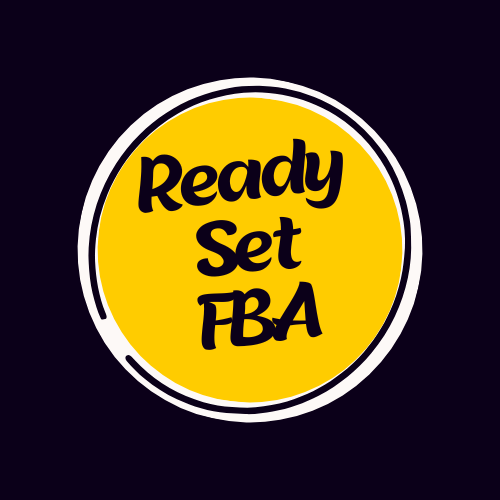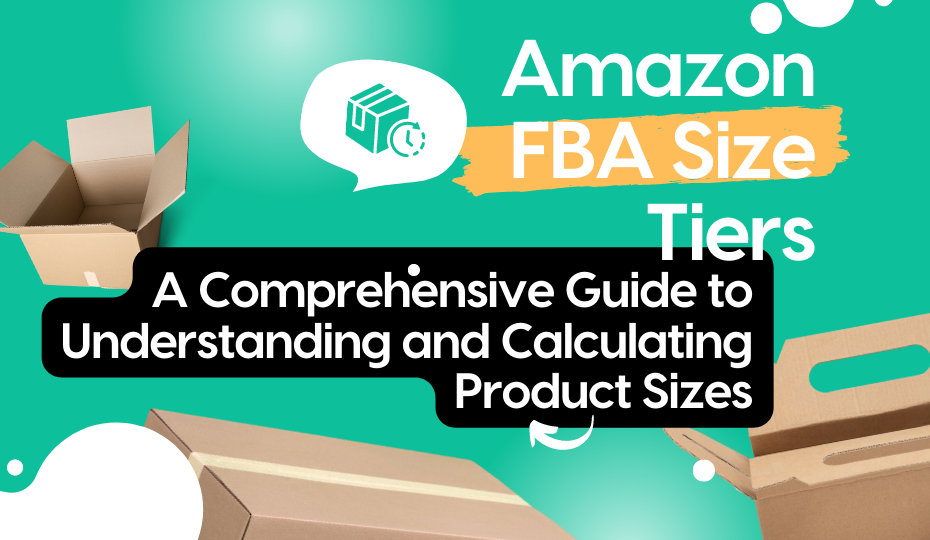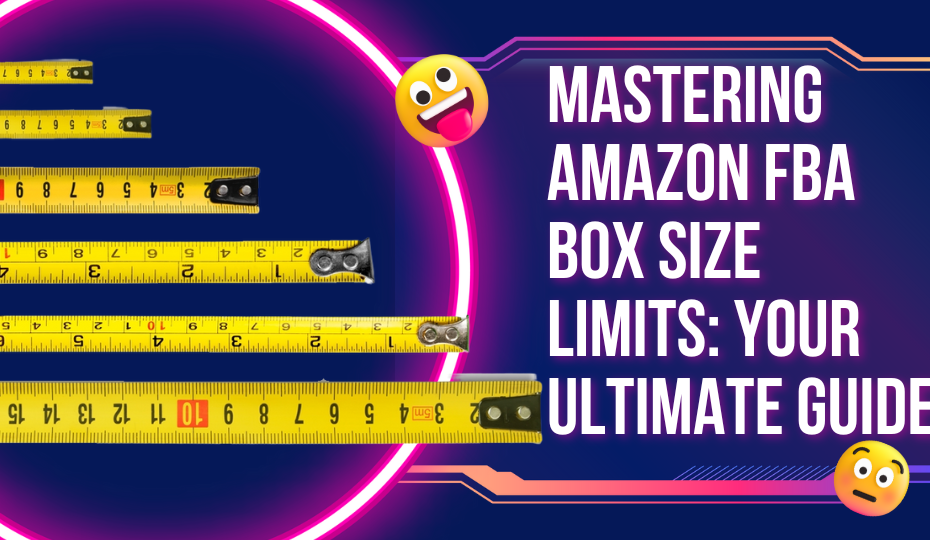· readysetfba · Fulfilment · 16 min read
Amazon FBA Pallet Requirements
In the world of e-commerce, Amazon's Fulfillment by Amazon (FBA) service has revolutionized the way businesses operate. It offers a streamlined and efficient platform for sellers to store their products in Amazon's fulfillment centers.

In the world of e-commerce, Amazon’s Fulfillment by Amazon (FBA) service has revolutionized the way businesses operate. It offers a streamlined and efficient platform for sellers to store their products in Amazon’s fulfillment centers. Amazon takes care of storage, packaging, and shipping, as well as customer service and returns for these products. This allows sellers to focus on other aspects of their business, making it an attractive option for both small and large businesses.
However, to make the most of the Amazon FBA service, understanding the specific requirements set by Amazon is crucial. One such critical aspect is the Amazon FBA pallet requirements. These requirements are a set of guidelines that sellers must adhere to when sending their products to Amazon’s fulfillment centers. They cover everything from the size and type of the pallets to how products should be stacked on them.
Adhering to these Amazon FBA pallet requirements is not just about compliance; it’s about efficiency, safety, and ultimately, customer satisfaction. Amazon’s strict rules ensure that products are stored and transported safely, reducing the risk of damage. This, in turn, leads to faster processing times, fewer returns due to damaged goods, and higher customer satisfaction.
In this comprehensive guide, we’ll delve deep into the Amazon FBA pallet requirements, providing you with all the information you need to prepare your pallets correctly. Whether you’re new to Amazon FBA or looking to improve your understanding, this guide is designed to help you master the Amazon FBA pallet requirements and avoid common pitfalls. So let’s get started on your journey to mastering Amazon FBA pallet requirements.
Also read Amazon Fba Box Size Limits
Why is Amazon Strict About Pallet Requirements?
Amazon’s Fulfillment by Amazon (FBA) service has revolutionized the world of e-commerce, offering businesses of all sizes the opportunity to leverage Amazon’s vast logistics network. However, to ensure the smooth operation of this vast network, Amazon has established stringent pallet requirements. These requirements are not arbitrary; they are rooted in Amazon’s commitment to efficiency, safety, and customer satisfaction.
Efficiency is at the heart of Amazon’s operations. The company processes millions of orders each day, and to do so, it relies on a well-orchestrated logistics system. Pallets play a crucial role in this system, serving as the primary means of transporting goods within Amazon’s warehouses. By enforcing strict pallet requirements, Amazon ensures that all pallets entering its facilities are uniform and can be handled efficiently by their equipment and personnel. This uniformity reduces the time spent on handling and sorting, leading to faster order processing and delivery times.
Safety is another key consideration. Improperly prepared or non-standard pallets can pose significant safety risks in a warehouse environment. They can lead to accidents during handling, potentially causing injury to personnel and damage to goods. Amazon’s pallet requirements, which include specifications for dimensions, weight, and stacking, are designed to minimize these risks, ensuring a safe working environment.
Lastly, Amazon’s strict pallet requirements are tied to its commitment to customer satisfaction. By ensuring that goods are properly palletized, Amazon can reduce the likelihood of damage during storage and transportation, ensuring that customers receive their orders in perfect condition. Furthermore, efficient and safe handling of pallets contributes to faster delivery times, enhancing the overall customer experience.
In essence, Amazon’s strictness about pallet requirements is a reflection of its commitment to maintaining a highly efficient, safe, and customer-centric operation. Understanding and adhering to these requirements is crucial for any business seeking to leverage the benefits of the Amazon FBA service.
Also read What Countries Is Amazon In Global Footprint
Understanding Amazon FBA Pallet Requirements: A Visual Guide
When it comes to Amazon FBA pallet requirements, understanding the specifics is crucial for smooth operations. This guide will help you visualize the key aspects of these requirements.
Pallet Dimensions
Amazon requires pallets to be 40 inches by 48 inches, which is the standard size for most industries. However, the height of the pallets can vary. Under most circumstances, the maximum height that your pallets can be is 72 inches (5.9 feet), including the height of the pallet itself. Exceptions to this height maximum exist, such as when a pallet of freight adheres to clamping instructions outlined by Amazon’s floor loading guidelines, then its total height can be 98 inches (8.1 feet). For double-stacked pallets, the maximum height limit is 100 inches (8.3 feet).
Types of Pallets
Amazon has specific requirements for the types of pallets used. They must be wooden and ISPM-15 approved, which means they’ve undergone heat treatment to eliminate any parasitic organisms. Amazon prefers sellers to use GMA (Grocery Manufacturers Association) pallets, which come in different grades depending on the type of goods being transported. For instance, Standard B Grade pallets are used for standard goods, while 1A Grade pallets are used for grocery products, and either 1A or 1B Grade pallets can be used for health and personal care beauty products.
Correctly Prepared Pallets
Properly preparing your pallets for Amazon FBA involves more than just stacking your products on them. You need to ensure that the freight is loaded evenly and securely, with heavier items at the bottom and lighter ones on top. The freight should not hang over the edges of the pallet, and it should be secured with clear plastic stretch wrap. Each pallet also needs to have four shipping labels, one on each side.
Understanding and adhering to Amazon FBA pallet requirements is crucial for avoiding shipment rejections and ensuring your products reach Amazon’s fulfillment centers without any issues. By following these guidelines and visualizing the requirements, you can make the process of preparing your pallets for Amazon FBA much smoother and more efficient.
| Key Information | Value |
|---|---|
| Pallet Dimensions | 40 inches by 48 inches |
| Maximum Height (Standard) | 72 inches (5.9 feet) |
| Maximum Height (Clamping Instructions) | 98 inches (8.1 feet) |
| Maximum Height (Double-Stacked Pallets) | 100 inches (8.3 feet) |
| Types of Pallets | Wooden and ISPM-15 approved |
| Preferred Pallet Type | GMA (Grocery Manufacturers Association) |
| Pallet Grades | Standard B Grade, 1A Grade (for grocery products), 1A or 1B Grade (for health and personal care beauty products) |
| Preparation Requirements | Even and secure loading, heavier items at the bottom, lighter items on top, no overhanging freight, clear plastic stretch wrap, four shipping labels (one on each side) |
Also read Common Terms Amazon
Real-life Examples and Case Studies
When it comes to understanding the intricacies of Amazon FBA pallet requirements, there’s no better way to learn than through real-life examples and case studies. These stories not only provide practical insights but also highlight the challenges businesses face and how they overcome them.
Overcoming the Challenge of Pallet Dimensions
One online retailer specializing in home decor products faced a significant hurdle when they first started using Amazon FBA. Their products, primarily large decorative items, didn’t fit neatly onto the standard 40 by 48-inch pallets specified by Amazon. After having their first few shipments rejected, they realized they needed to rethink their packaging strategy.
They decided to invest in custom-sized boxes that could fit their products and still adhere to Amazon’s pallet requirements. This change required an upfront investment, but it paid off in the long run. Their shipments were no longer rejected, and they were able to increase their sales on Amazon significantly. The key lesson here is the importance of adhering to Amazon’s pallet dimensions, even if it means rethinking your packaging strategy.
Navigating the ISPM-15 Regulation
Another case involves a small business selling artisanal wooden furniture. When they decided to expand their business internationally using Amazon FBA, they ran into the ISPM-15 regulation. This regulation requires all wooden packaging materials to be heat-treated to eliminate potential pests.
Initially, the business was unaware of this requirement and faced shipment rejections. However, once they understood the regulation, they partnered with a local heat-treatment facility to ensure their wooden pallets complied with ISPM-15. This partnership not only solved their compliance issue but also gave them a competitive advantage in the marketplace. The lesson here is the importance of understanding and complying with international shipping regulations like ISPM-15 when using Amazon FBA.
Mastering Pallet Preparation
A third example involves a business selling bulk food items. They initially struggled with preparing their pallets for Amazon FBA. Their pallets were often unstable, leading to damaged goods and rejected shipments.
To overcome this, they invested in training for their warehouse staff on proper pallet preparation and loading techniques. They also implemented a checklist system to ensure each pallet was prepared correctly. As a result, their rate of shipment rejection decreased dramatically, and they were able to fulfill orders more efficiently. This case study underscores the importance of proper pallet preparation and the value of investing in staff training.
These real-life examples highlight the challenges businesses face when dealing with Amazon FBA pallet requirements. They also demonstrate that with the right strategies and a willingness to adapt, these challenges can be overcome.
Also read About Us
Step-by-step Guide to Preparing a Pallet for Amazon FBA
Navigating the world of Amazon FBA pallet requirements can seem daunting, but with a clear understanding and a step-by-step approach, it becomes a manageable task. Here’s a comprehensive guide to help you prepare your pallet for Amazon FBA.
Selecting Inventory
The first step in preparing your pallet is to select the inventory you wish to ship. Amazon provides a Fulfillment by Amazon (FBA) stock-keeping unit (SKU) list from which you can choose your items. You can select single boxes containing one type of item or boxes with multiple types of items. Amazon also allows sellers to add inventory in bulk.
Packing Boxes
Once you’ve selected your inventory, the next step is to pack your goods into boxes. Amazon requires information about these boxes, including:
- Item contents in your box
- The number of boxes you’re shipping
- Estimated number of boxes for multiple box shipments
- Box weight
- Box dimensions
You can choose not to disclose the contents of your boxes and have Amazon process them for you, but this option incurs a fee.
Confirming Shipping Information
After packing your boxes, you’ll need to confirm your shipping information. This includes choosing the shipping date and the mode of transportation for your goods. Amazon sellers can choose between small parcel shipments or pallet shipments. For pallet shipments, you’ll choose the less than truckload (LTL) shipping mode.
Loading the Pallet
When it comes to loading your pallet, start with the heavier items first and stack the lighter ones on top. Ensure the freight is loaded evenly on the pallets, meaning your loaded pallet should not resemble a pyramid. Also, freight should not hang over the edge of the pallet. Some boxes of freight that are too heavy or large will need to be placed on their own pallet.
Securing and Wrapping Pallets
Once your pallet is loaded, you’ll need to secure the freight using clear plastic stretch wrap. Start from the bottom of the pallet and work your way up, wrapping the plastic around multiple times. Once you’ve wrapped the top of the pallet, work your way down again. Tear the wrap at the bottom and tuck the excess under one of the layers on the pallet.
Labeling
The final step in preparing your pallet for Amazon FBA is labeling. Amazon requires an FBA box ID label for every box secured to your pallet. Each pallet will require four shipping labels, one for each side. Place the shipping label straight up and squarely.
Also read Amazon Fba Calculator
Checklist for Preparing a Pallet for Amazon FBA
- Select inventory
- Pack boxes
- Confirm shipping information
- Load the pallet
- Secure and wrap pallets
- Label boxes and pallets
By following these steps, you’ll ensure that your pallet meets the Amazon FBA pallet requirements, reducing the risk of shipment rejection and ensuring a smoother selling experience on Amazon.
Also read The Amazon Canonical Url Keyword Placement
Expert Insights on Amazon FBA Pallet Requirements
In the world of Amazon FBA, understanding pallet requirements is crucial. To provide a deeper understanding, we’ve gathered insights from industry experts who have firsthand experience with Amazon’s stringent rules.
A seasoned Amazon FBA seller, emphasizes the importance of adhering to Amazon’s pallet requirements. “Amazon’s rules may seem strict, but they’re designed to ensure efficiency and safety in their warehouses,” he says. “By following these guidelines, sellers can avoid shipment rejections and delays, ultimately leading to better customer satisfaction.”
A supply chain consultant with experience in Amazon FBA operations, highlights the importance of using the correct pallet type. “Amazon requires GMA Standard B Grade pallets for most shipments,” she explains. “Using the correct pallet type not only ensures compliance with Amazon’s rules but also contributes to the smooth handling and storage of your products in Amazon’s fulfillment centers.”
Another expert, a logistics manager who has worked with numerous Amazon FBA sellers, underscores the importance of properly preparing and wrapping pallets. “A common mistake I see is poorly wrapped pallets,” he notes. “It’s essential to secure your products with clear plastic stretch wrap to prevent them from falling over during transport. This not only protects your products but also ensures the safety of Amazon’s warehouse workers.”
These expert insights underscore the importance of understanding and adhering to Amazon’s FBA pallet requirements. By following these guidelines, sellers can ensure their products are safely and efficiently handled within Amazon’s fulfillment centers, leading to faster product availability and improved customer satisfaction. Remember, mastering the “Amazon FBA Pallet Requirements” is not just about compliance; it’s about optimizing your operations for success in the Amazon marketplace.
Also read Amazon Fba Size Tiers
Common Mistakes and How to Avoid Them
When it comes to preparing pallets for Amazon FBA, sellers often make a few common mistakes that can lead to shipment rejections or delays. Understanding these pitfalls and how to avoid them is crucial for a smooth and efficient shipping process.
Incorrect Pallet Dimensions
One of the most common mistakes is using pallets with incorrect dimensions. Amazon requires pallets to be 40 inches by 48 inches. Using pallets that do not meet these specifications can lead to your shipment being rejected.
Tip: Always double-check the dimensions of your pallets before loading your products. If you’re unsure, use a tape measure to confirm the size.
Improper Stacking of Products
Another common mistake is improper stacking of products on the pallet. This can include overloading the pallet, stacking products unevenly, or allowing products to hang over the edges of the pallet.
Tip: Start with heavier items at the bottom and lighter ones on top. Ensure that the products are evenly distributed and do not extend beyond the edges of the pallet.
Inadequate Wrapping
Inadequate wrapping can lead to products shifting during transport, which can cause damage or even lead to the pallet tipping over.
Tip: Use clear plastic stretch wrap to secure your products to the pallet. Start from the bottom and work your way up, wrapping around multiple times to ensure stability.
Non-compliance with ISPM-15
For international shipments, a common mistake is not complying with the International Standards for Phytosanitary Measures No. 15 (ISPM-15). This standard requires all wooden packaging materials to be heat-treated to eliminate potential pests.
Tip: Ensure your pallets are ISPM-15 compliant if you’re shipping internationally. Look for the ISPM-15 stamp on your pallets to confirm they’ve been properly treated.
By avoiding these common mistakes, you can ensure your pallets meet the “Amazon FBA Pallet Requirements” and avoid unnecessary complications in your shipping process.
Also read Amazon Fba Warehouse Locations
FAQs on Amazon FBA Pallet Requirements
When it comes to Amazon FBA pallet requirements, sellers often have a lot of questions. Here, we address some of the most common queries to help you navigate this aspect of Amazon FBA more effectively.
What are the standard dimensions for Amazon FBA pallets?
Amazon requires pallets to be 48 inches by 40 inches, which is the standard pallet size. However, if a single piece of freight is too large to fit on the pallet, a wider pallet can be used.
Why does Amazon require pallets to be wooden and ISPM-15 approved?
Wooden pallets are durable and can withstand the weight of heavy goods. The ISPM-15 approval ensures that the wood has been treated to eliminate any harmful organisms, making it safe for international shipping.
Can I use plastic wrap to secure my goods to the pallet?
Yes, Amazon requires all goods to be secured to the pallet using clear plastic stretch wrap. This helps to prevent items from falling over during transportation and makes it safer for workers when they unwrap it.
How many Amazon shipment labels do I need?
Amazon requires an FBA box ID label for every box that is secured to your pallet. Additionally, each pallet requires four shipping labels to go on each side.
What happens if I don’t comply with Amazon’s pallet requirements?
Non-compliance with Amazon’s pallet requirements can result in your shipment being refused. It’s crucial to understand and adhere to these requirements to avoid any disruptions in your business operations.
Are there any exceptions to Amazon’s pallet height requirements?
Yes, there are exceptions. If a pallet of freight adheres to clamping instructions outlined by Amazon’s floor loading guidelines, then its total height can be 98 inches. The maximum height limit for double-stacked pallets is 100 inches.
Remember, these are general answers to common questions. For more detailed information, always refer to Amazon’s official guidelines on FBA pallet requirements.
Also read Where Does Helium 10 Get Its Data
Keeping Up with Amazon’s Policies: Recent and Upcoming Changes
In the ever-evolving world of e-commerce, it’s crucial to stay updated with the latest changes in policies and requirements. Amazon, as a global leader in this space, is no exception. The company frequently updates its Fulfillment by Amazon (FBA) pallet requirements to streamline operations, enhance safety, and improve customer satisfaction.
While there haven’t been any significant changes to Amazon’s pallet requirements recently, it’s important to note that Amazon is always looking for ways to improve its processes. Therefore, sellers should regularly check Amazon’s official guidelines or subscribe to Amazon’s seller updates to stay informed about any modifications.
One potential change that could occur in the future relates to the type of pallets allowed. Currently, Amazon requires all pallets to be wooden and ISPM-15 approved. However, with the increasing focus on sustainability and reducing deforestation, Amazon might consider allowing the use of plastic or recycled pallets in the future. Such a change could significantly impact sellers, particularly those who rely on wooden pallets, as they would need to source alternative pallet types.
Another possible change could be in the area of pallet dimensions. As Amazon continues to optimize its warehouse space, it might revise the standard pallet dimensions to accommodate more products. Sellers would need to adjust their packaging processes to comply with these new dimensions.
In conclusion, while Amazon’s FBA pallet requirements have remained relatively stable, sellers should always be prepared for potential changes. Staying informed and adaptable is key to maintaining a successful Amazon FBA business.
Also read Which Countries Are Allowed To Sell On Amazon Usa
Conclusion
Mastering Amazon’s FBA pallet requirements is essential for any seller looking to succeed on this platform. From understanding why Amazon is strict about its pallet requirements to knowing how to prepare a pallet correctly, this guide has provided comprehensive insights into navigating this aspect of Amazon’s operations. Remember, staying updated with Amazon’s policies and being adaptable to changes is crucial. So, apply these tips, stay informed, and you’ll be well on your way to mastering Amazon’s FBA pallet requirements.



